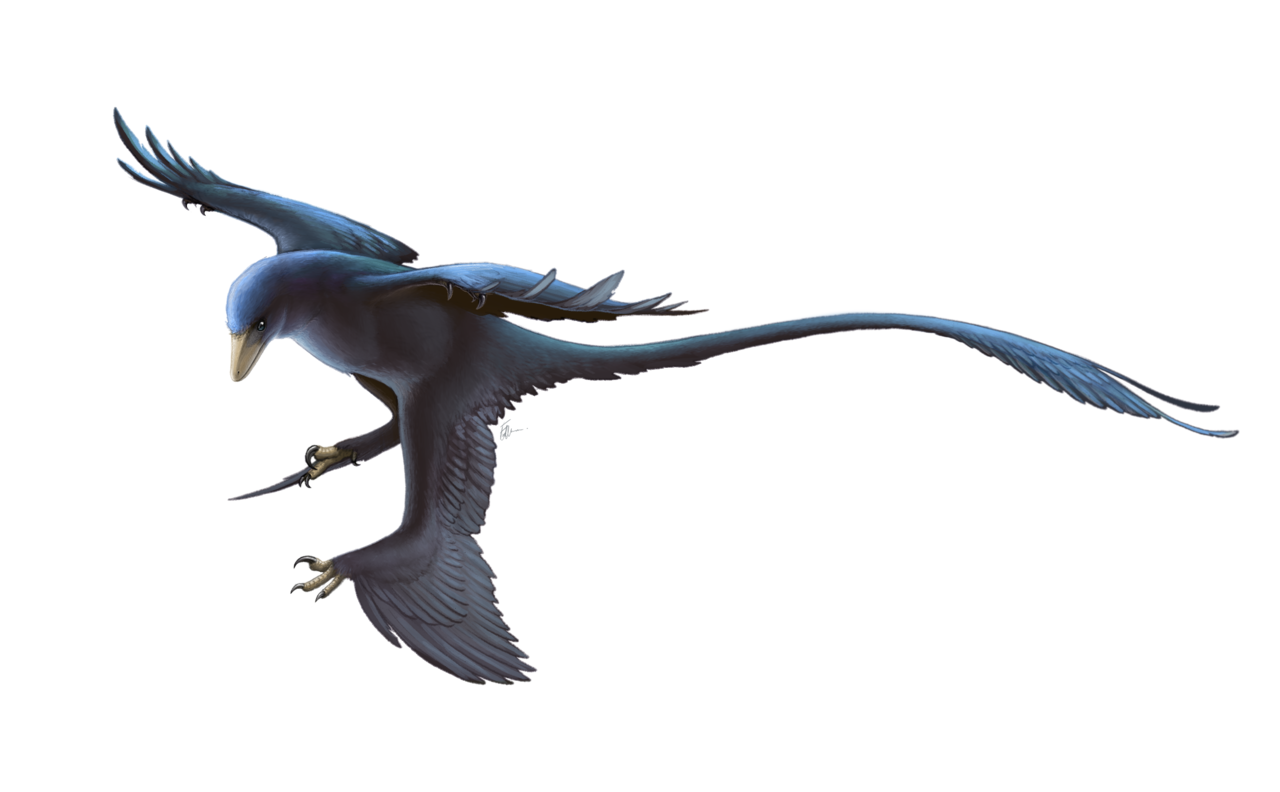
Tetrapteryx
Ecologist and conservationist William Beebe produced a litany of astonishing scientific achievements. He pioneered the holistic study of biomes, now the standard procedure. He became the first human to study deepsea fishes in their native environments. He discovered the odd phenomenon of army ant death spirals. His first natural love, however, belonged to the avian realm. And it’s to the birds that one of his quirkiest additions to scientific thought belongs.
Beebe noticed the embryos and chicks of some contemporary birds featured long quill feathers on their legs. Also called remiges, these feathers are for flight, not insulation. They apparently served no modern purpose, so why were these types of feathers on the hind appendages of birds?
William Beebe believed he knew the answer.
He regarded the presence of feathers on legs today to be atavisms. This fancy word refers to a genetic trait that has been lost through evolution that reappears in a current individual. In other words, the trait used to be a thing in a species, but now it’s not a thing, yet sometimes it shows up in a species anyway. An example of an atavism in humans is the vestigial tail with which some infants enter the world.
Beebe coupled these flight feathers with the vestiges of leg wings in a specimen of Archaeopteryx, a bird-like dinosaur often viewed as a transition species to full-fledged avians, to postulate the tetrapteryx.
From the Greek tetra, meaning four, and pteryx, or wing, a tetrapteryx is a bird with four wings. Beebe believed, at one point, birds did not soar with the two-wing structure we see today, but used their legs to propel them through the air, as well.

He advanced this theory in a 1915 paper in the journal Zoologica, called “A Tetrapteryx Stage in the Ancestry of Birds.” His tetrapteryx is not a specific species of bird, but instead a stage of development. He avered the lineage of modern birds ripened through ancestors that used all four limbs to fly.
Initially, other paleontologists and evolutionary biologists received Beebe’s idea with positivity. Danish scientist Gerhard Heilmann evaluated the hypothesis in his 1926 treatise, The Origin of Birds. Heilmann spent considerable time searching for other examples for flight feathers. Unable to uncover any other evidence, Heilmann eventually discarded Beebe’s notion.
Despite Beebe’s steady promotion, the concept of the tetrapteryx fell into dispute among ornithologists. William Beebe died in 1962 and, it seemed, his hypothesis went to the grave with him.

Enter Microraptor gui.
In the early 2000s, scientists discovered several preserved specimens of this winged dinosaur. These samples seemed to show something incredible: the raptors had flight feathers on their legs! Paleontologists believe the dinosaur was capable of not just soaring with four legs, but also powered flight.
Ornithologist Richard Prum opined that Microraptor looked “as if it could have glided straight out of the pages of Beebe’s notebooks.”
Suddenly, the tetrapteryx was back! Once abandoned by scientists, Beebe now stands as a Nostradamus of ornithology. Perhaps one day, other examples of these four-winged forebearers will emerge from the rock, strengthening Beebe’s theory. Until then, miniature raptors will have to suffice.

Further Reading and Exploration
A Tetrapteryx Stage in the Ancestry of Birds by William Beebe – Zoologica
Dinosaurs Take to the Air by Richard O. Prum – Nature
The Four-Winged Dinosaur – PBS Nova
A shiny dinosaur – four-winged Microraptor gets colour and gloss – National Geographic














